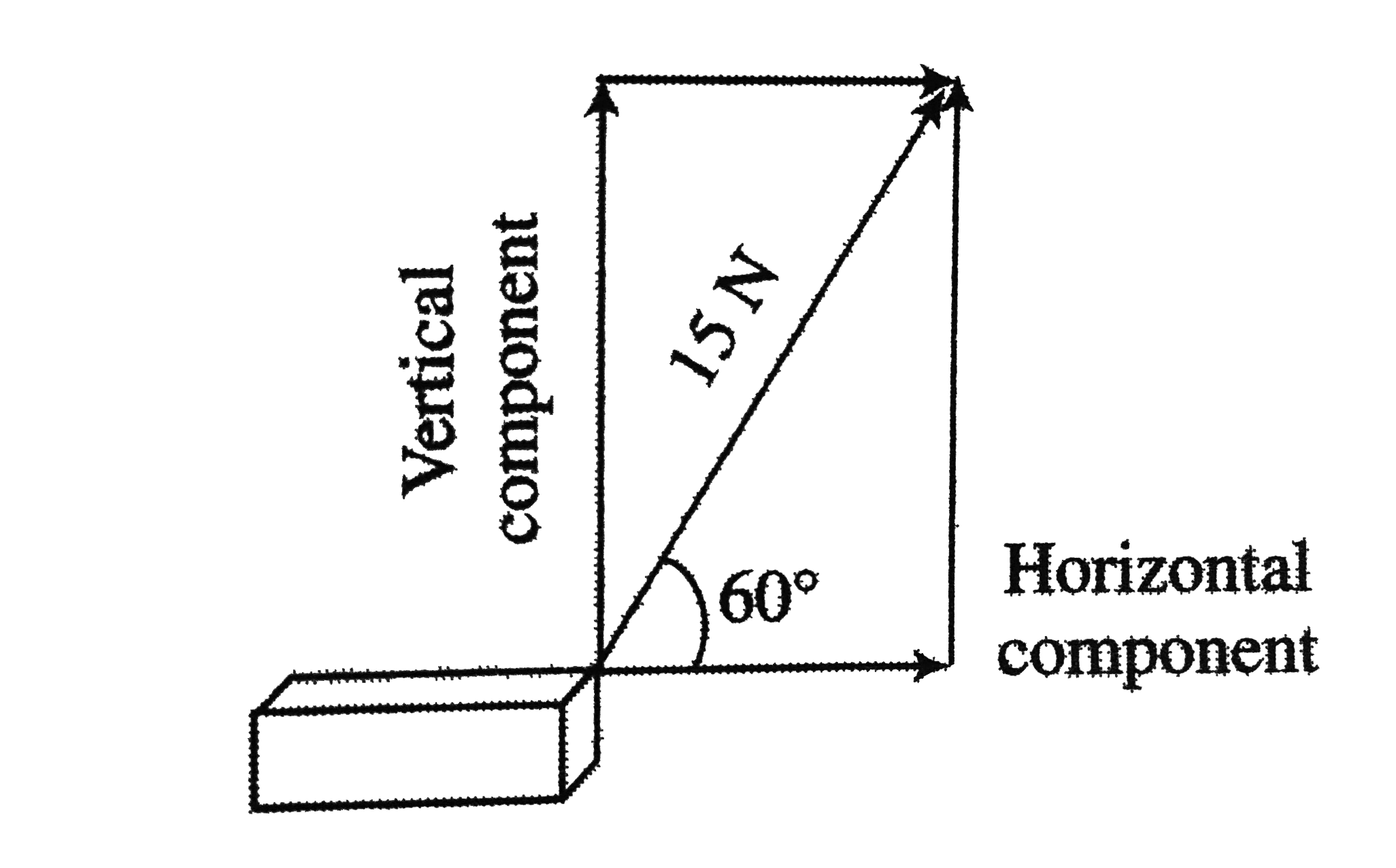A force acts on a body at a certain angle with the horizontal such that the vertical component is twice the horizontal component . What is the inclination of the force ?
The correct Answer is:63.4∘
To solve the problem of finding the inclination of a force acting on a body such that the vertical component is twice the horizontal component, we can follow these steps:
Step 1: Define the Components of the Force
Let F be the magnitude of the force. The force can be resolved into two components:
- Horizontal component (FH)
- Vertical component (FV)
According to the problem, we know that:
FV=2FH
Step 2: Use Trigonometric Relationships
The components of the force can also be expressed in terms of the angle θ that the force makes with the horizontal:
- The horizontal component is given by:
FH=Fcos(θ)
- The vertical component is given by:
FV=Fsin(θ)
Step 3: Set Up the Equation
From the relationship given in the problem, we can substitute the expressions for FH and FV:
Fsin(θ)=2Fcos(θ)
Step 4: Simplify the Equation
We can divide both sides of the equation by F (assuming F≠0):
sin(θ)=2cos(θ)
Step 5: Use the Tangent Function
We can rearrange the equation to express it in terms of tangent:
sin(θ)cos(θ)=2
This implies:
tan(θ)=2
Step 6: Find the Angle
To find θ, we take the arctangent (inverse tangent) of both sides:
θ=tan−1(2)
Step 7: Calculate the Angle
Using a calculator or trigonometric tables, we find:
θ≈63.43∘
Final Answer
Thus, the inclination of the force is approximately 63.43∘.
---
Let F be the magnitude of the force. The force can be resolved into two components:
- Horizontal component (FH)
- Vertical component (FV)
FV=2FH
The components of the force can also be expressed in terms of the angle θ that the force makes with the horizontal:
- The horizontal component is given by:
FH=Fcos(θ)
- The vertical component is given by:
FV=Fsin(θ)
From the relationship given in the problem, we can substitute the expressions for FH and FV:
Fsin(θ)=2Fcos(θ)
We can divide both sides of the equation by F (assuming F≠0):
sin(θ)=2cos(θ)
We can rearrange the equation to express it in terms of tangent:
sin(θ)cos(θ)=2
This implies:
tan(θ)=2
To find θ, we take the arctangent (inverse tangent) of both sides:
θ=tan−1(2)
Using a calculator or trigonometric tables, we find:
θ≈63.43∘
Thus, the inclination of the force is approximately 63.43∘.
Topper's Solved these Questions
- BOOK - ICSECHAPTER - VECTORS SCALARS ELEMENTARY CALCULUS EXERCISE - FROM SCALAR PRODUCT AND VECTOR PRODUCT20videos
VECTORS SCALARS ELEMENTARY CALCULUS
- BOOK - ICSECHAPTER - VECTORS SCALARS ELEMENTARY CALCULUS EXERCISE - UNSOLVED PROBLEMS79videos
VECTORS SCALARS ELEMENTARY CALCULUS
- BOOK - ICSECHAPTER - VECTORS SCALARS ELEMENTARY CALCULUS EXERCISE - SELECTED PROBLEMS (FROM VECTOR ADDITION )14videos
VECTORS SCALARS ELEMENTARY CALCULUS
- BOOK - ICSECHAPTER - UNITSEXERCISE - MODULE 3 (SELECTED PROBLEMS)38videos
UNITS
- BOOK - ICSECHAPTER - WAVESEXERCISE - From Musical Sound10videos
WAVES
Similar Questions
Knowledge Check
- Question 1 - Select One
What is the angle of dip at a place where horizontal and vertical components of earth's field are equal?
A30∘B75∘C60∘D45∘
A body is thrown into air with a velocity 5 m/s making an angle 30∘ with the horizontal .If the vertical component of the velocity is 5 m/s what is the velocity of the body ? Also find the horizontal component .
View SolutionA force is inclined at an angle of 60∘ from the horizontal. If the horizontal component of the force is 40N,calculate the vertical component.
View SolutionA force is inclined at an angle of 60∘ from the horizontal. If the horizontal component of the force is 4N,calculate the vertical component.
View SolutionThe vertical component of a force acting at 60∘ to the horizontal is 8.48 N . Find the force and the horizontal component .
View SolutionA force is inclined at an angle of 60∘ from the horizontal. If the horizontal component of the force is 40N. Calculate the vertical component.
View SolutionThe horizontal component of the weight of a body of mass m is
View SolutionThe direction of a projectile at a certain instant is inclined at an angle ∝ to the horizontal , after t second, it is inclined at an angle β. Prove that the horizontal component of the velocity of the projectile is gttan∝−tanβ.
View Solution


